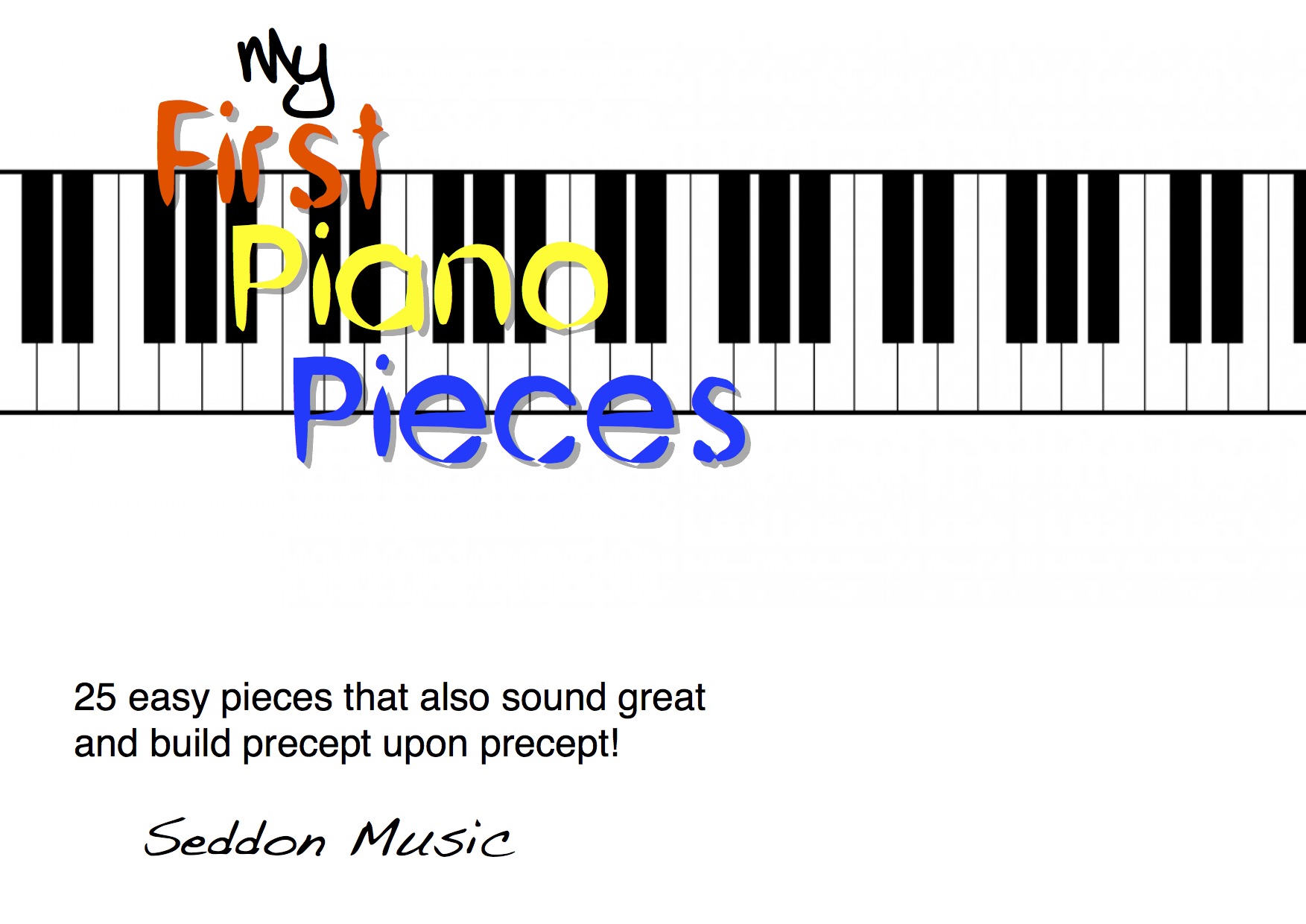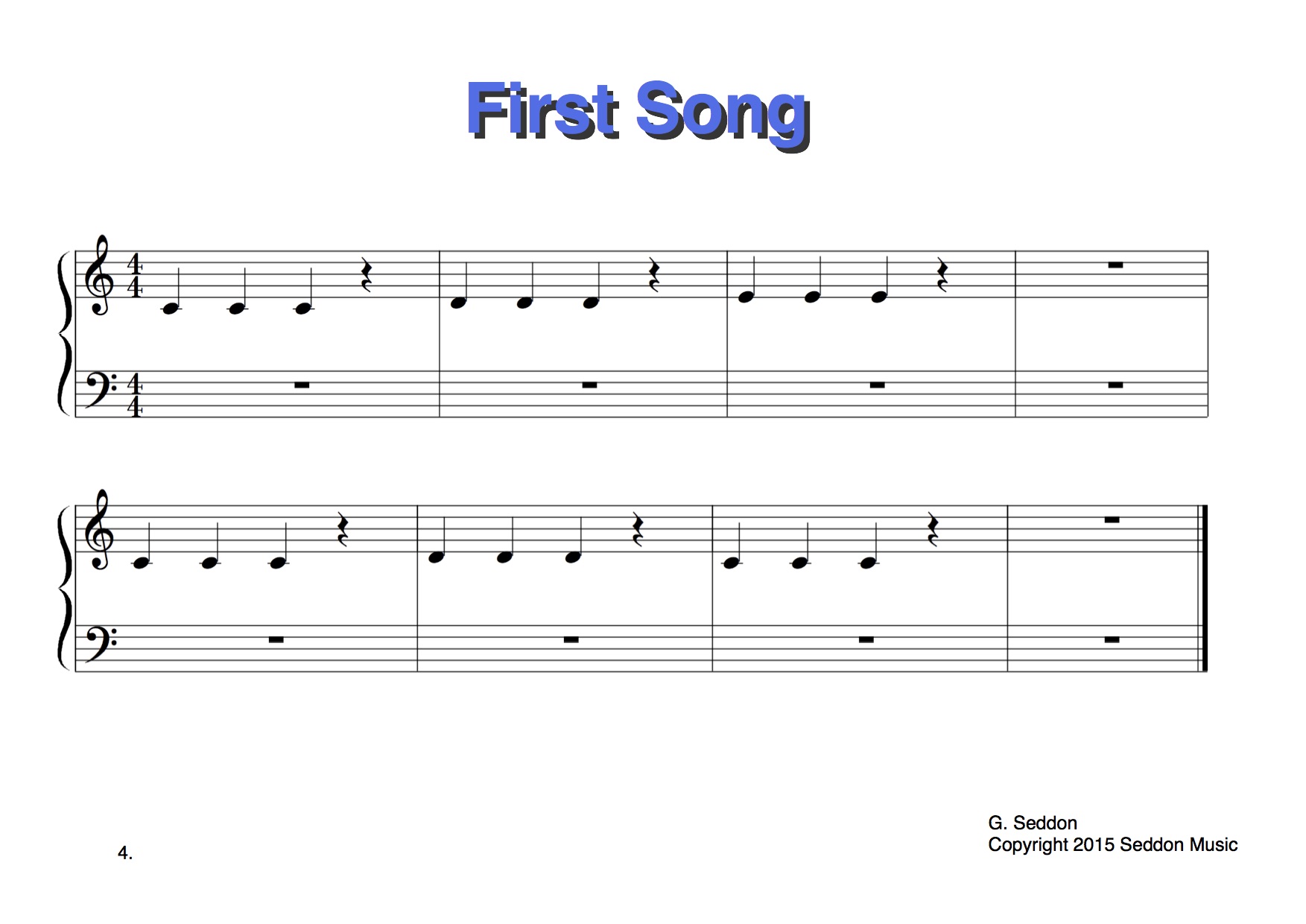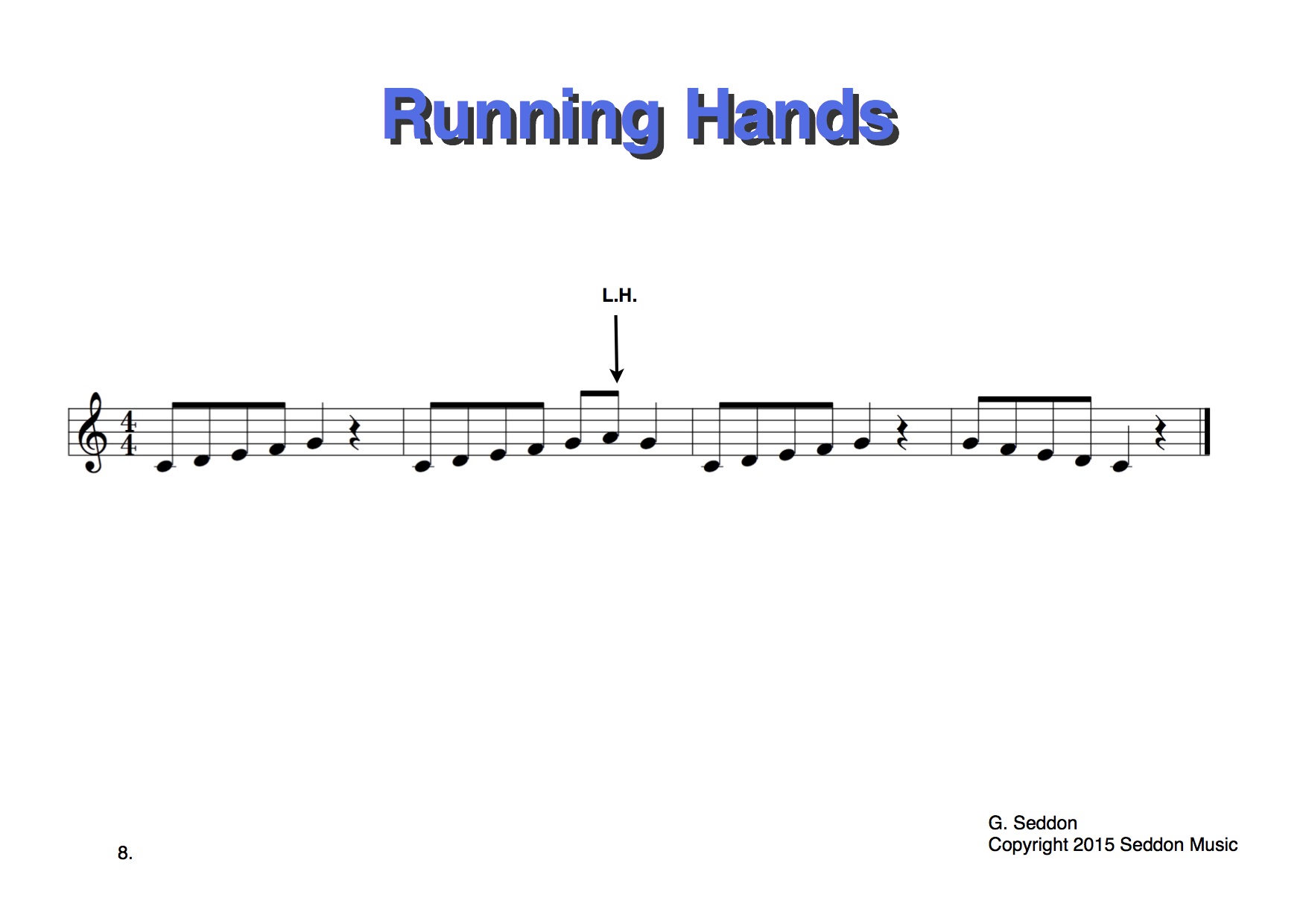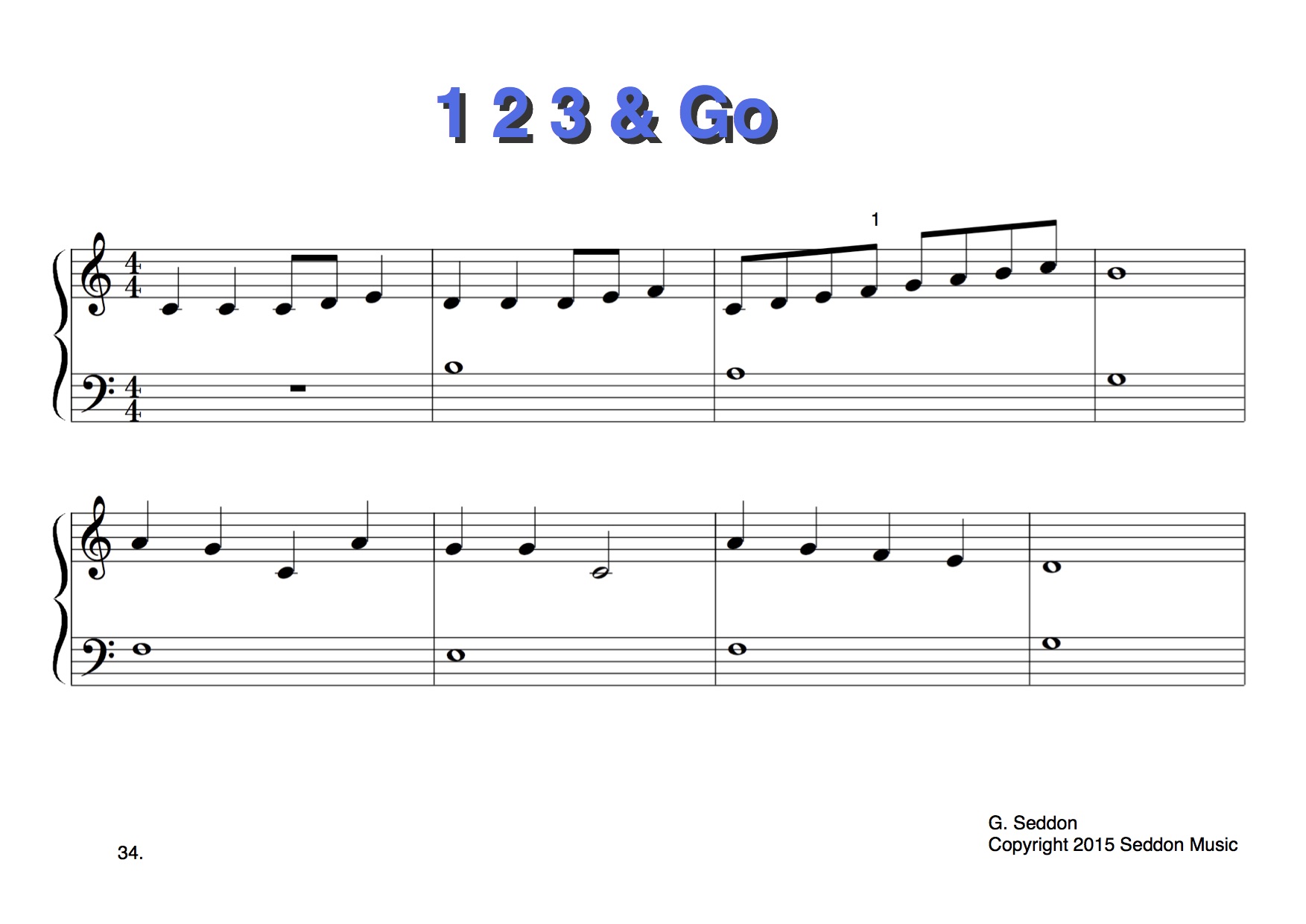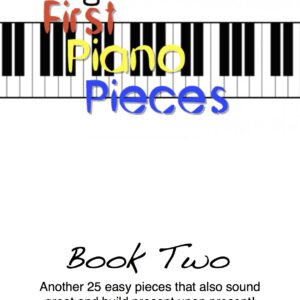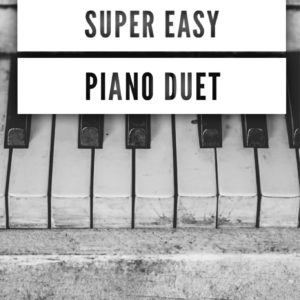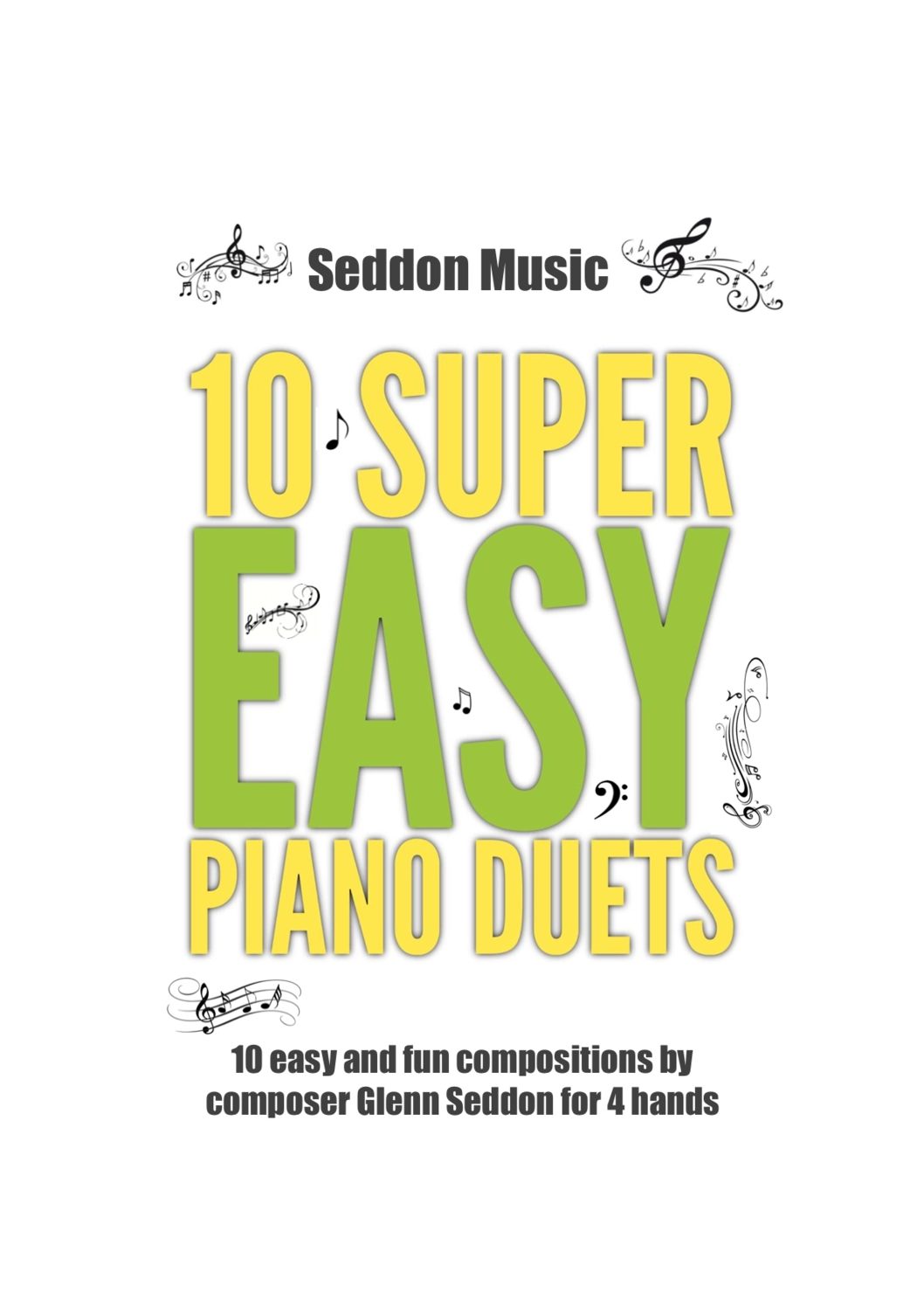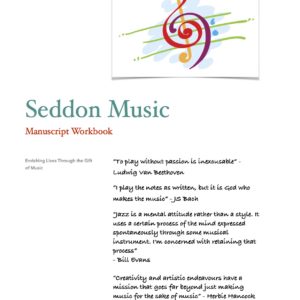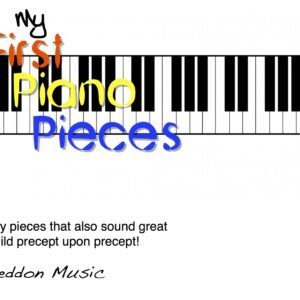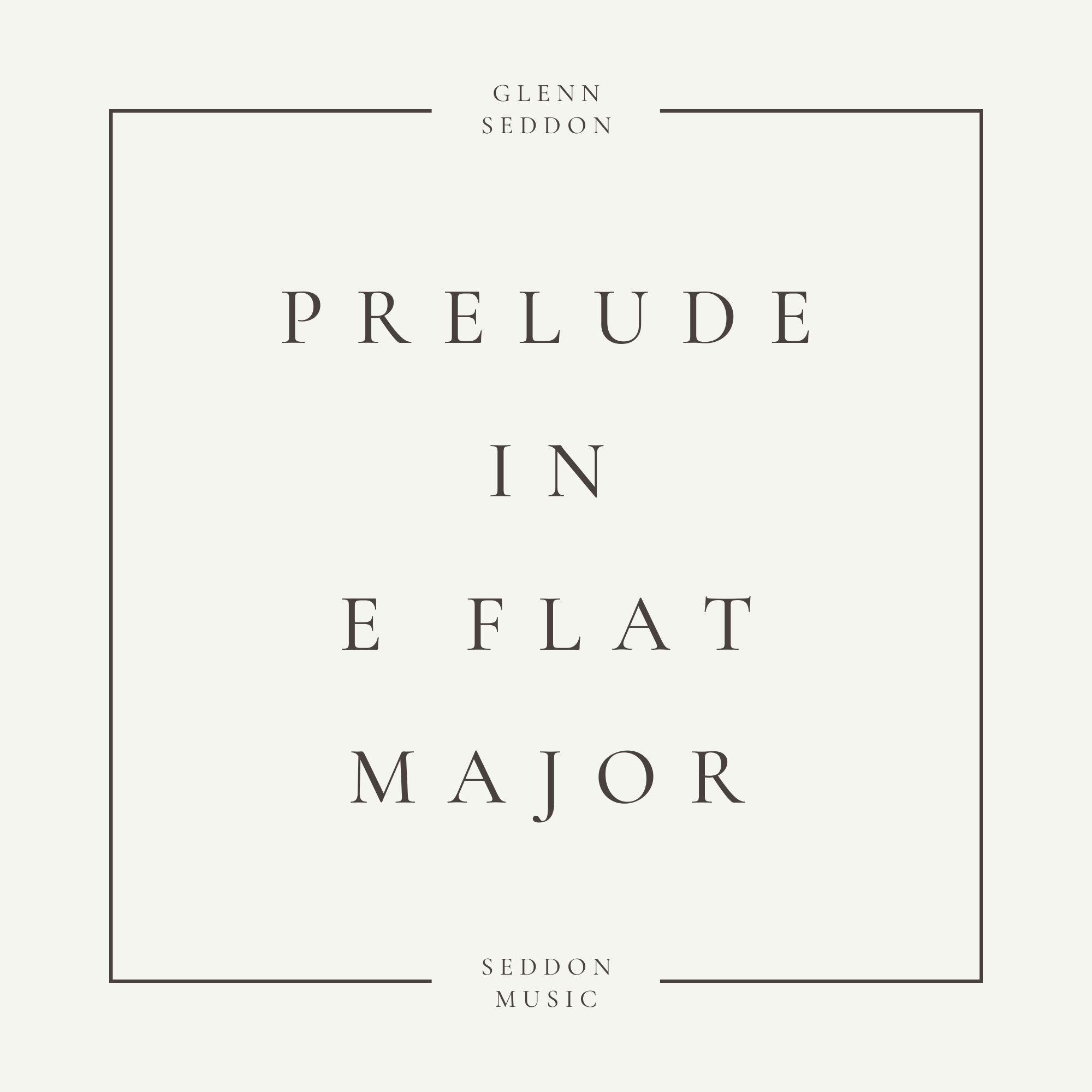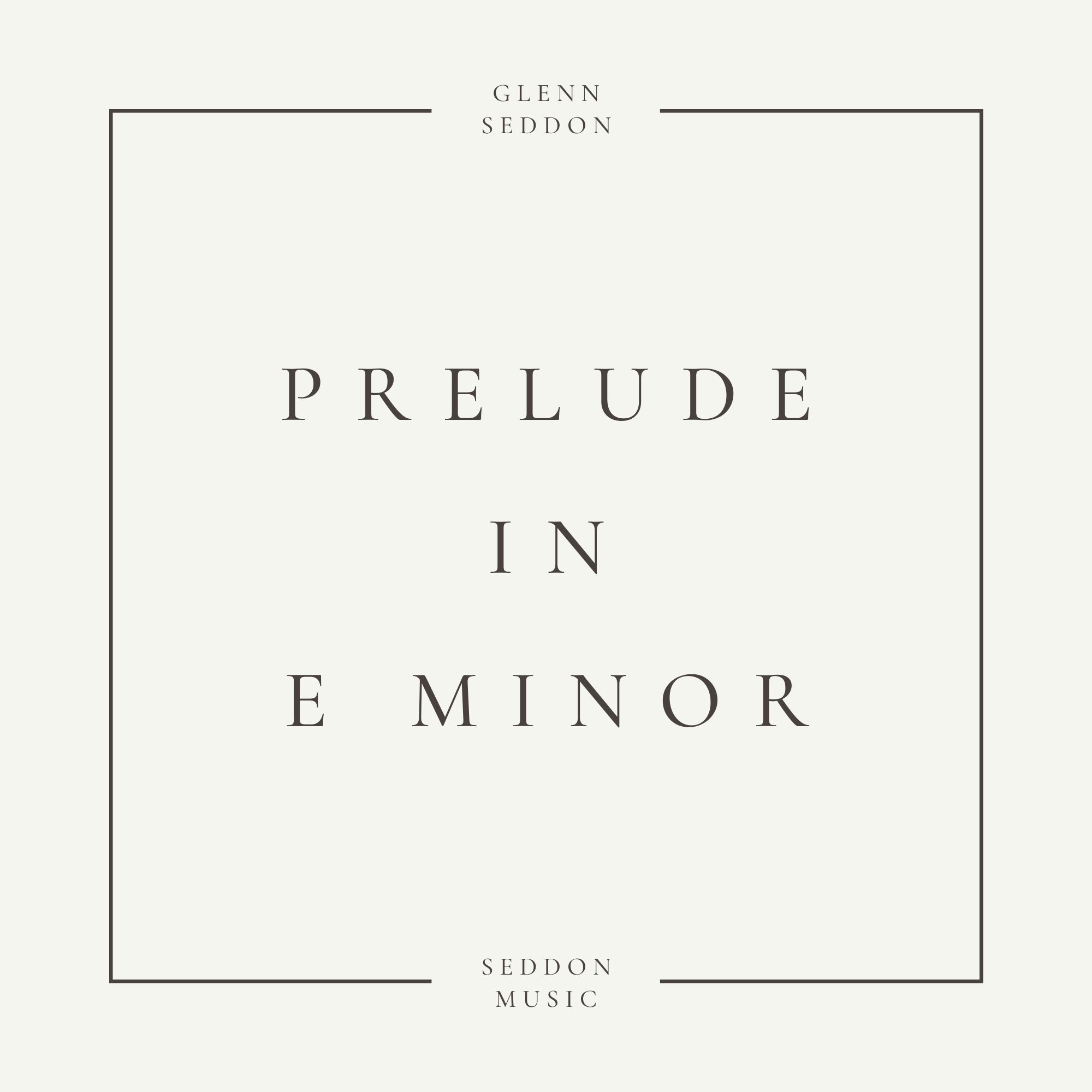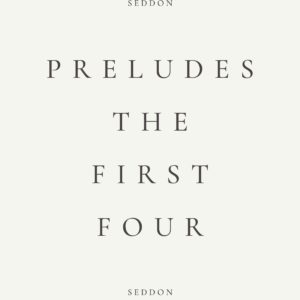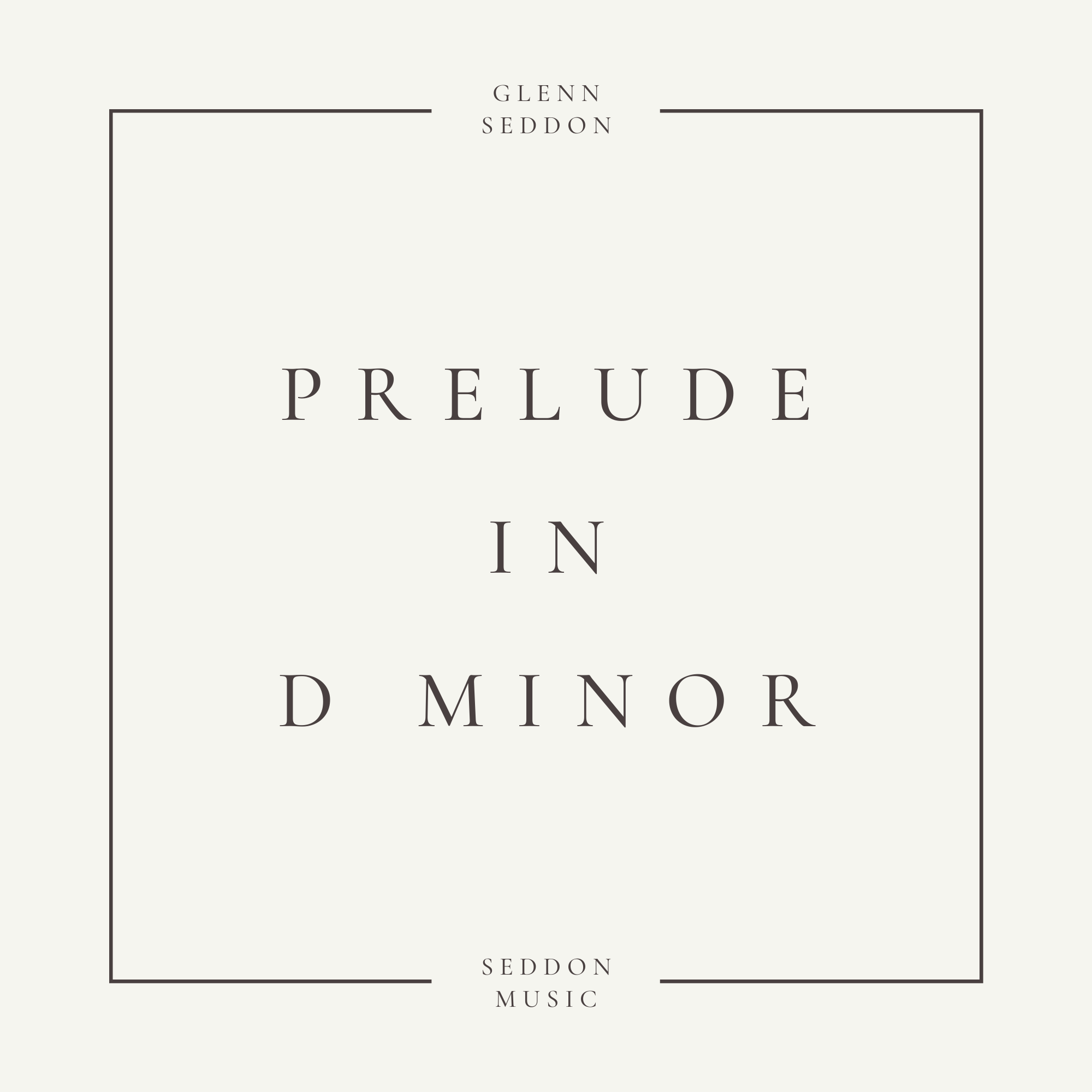Description
After teaching thousands of students for 30 years (now 35 years), I was not completely satisfied with the beginner piano curriculum available that I had seen. So I decided to create my own method book. Drawing upon my experience as a pianist (jazz and classical), compower and educator I created My First Piano Pieces.
Some of the things I was discontent with was :
1. Many of the method books had students playing in one position for a long time.
-students got used to playing the note E, for example, with their middle (3rd) finger and so as they progressed, every time they wanted to play E, even if they were now in another hand position, they still wanted to play E with their 3rd finger.
– so after just a few pieces we begin to move the hands around.
2. Many of the method books had too many fingerings notated.
– in some ways this is similar to the first issue. When too many fingerings were present, I would ask a student what is this or that note (on the stave) and they would 2 or 4 or 3. They would talk about which finger to use and not what note letter it was. Relying on the fingering meant they could get away with not trying to work out what note it was.
– My First Piano Pieces have only a few fingerings notated. I figured I was going to guides students through the book anyway and could show them what fingering was appropriate. Even the Debussy Etudes edition I’m working on now deliberately has no fingering marked.
3. The method books are often so busy.
– with butterflies and made up characters or other images and arrows and written instructions, I found that my students were getting distracted. I wanted to start playing the piece whilst we were wondering about why the butterfly was sad today.
– so this book has no pretty pictures and is minimalist in style. The music is the main thing with no distractions and also the reward!
4. The method books are harmonically uninteresting.
– Apart from a few books I found the songs to be very kiddy and harmonically boring. I felt that even though we were still learning their first few pieces, we could still have some interesting melodies or harmony. Students may not have played piano for very long, but they have been listening to music for at least a few years already. Introducing a note of tension that releases every now and then seemed like a good way to develop the students ear.
In this method book I’ve attempted to teach notation in stages, starting with pieces that focused on the notes C and G as landmarks and then counting up or down from there. Not trying to teach, every good boy deserves fruit or note recognition of the whole stave to start with. And from as early as I could I started to teach the concept of reading notes in groups (ie patterns and chords etc). Kind of like how we read letters in groups called ‘words’. When you can group music notation into a group (like a word) it’s much faster to read and play then spelling out all the letters one by one.
Starting with and building upon a simple 3 note phrase that students find easy to play, this innovative method book builds with the use of easy to play patterns and rhythms that sound great too! Students learn quickly and enjoy these pieces from day one and hand positions move around a bit so students learn the actual notes and not just what finger to use. The method uses a minimalist approach to directions and artwork giving the teacher (or Glenn’s youtube videos) a chance to do the teaching with little distraction for the student. Perfect for beginners aged 8-15.
This is a single user product.
You can buy a studio license for $45 and print it off or share the download to any of your students.
